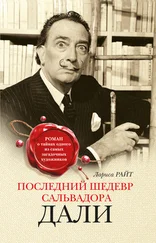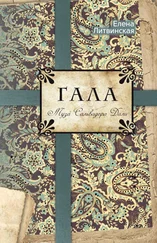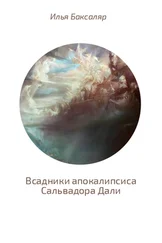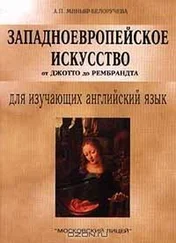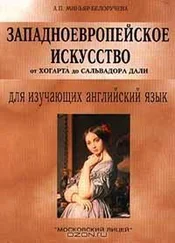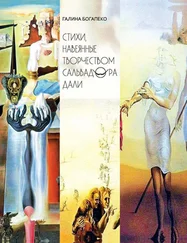Make sure you know how to pronounce the fo ll owing words:
Edouard Manet; Velazquez; Parisian; Austria; Folie-Bergere flagrant; Raphael; erasure; Napoleon; Mexico; Maximilian; luminosity; insoluble
Notes
Luncheon on the Grass – «Завтрак на траве»
A Bar at the Folie-Bergere – «Бар «Фоли – Бержер»
Execution of the Emperor Maximilian of Mexico – «Казнь императора Мексики Максимилиана»
Salon des Refuses – «Салон отверженных»
Tasks
I. Read the text. Make sure you understand it. Mark the following statements true or false.
1. Manet was the founder of Impressionism.
2. Manet admired Giotto, Ingres and Delacroix.
3. In the Luncheon on the Grass Manet was striving to produce three-dimensional forms on a flat surface.
4. Courbet liked the Luncheon on the Grass. 4. Manet never painted subjects from contemporary history. 6. A Bar at the Folie-Bergere is a brilliant restatement of Manet's earlier interest in the human figure.
II. How well have you read? Can you answer the following questions?
1. Where did Manet study painting?
2. What did Manet exhibit in 1863? How was this painting accepted by the public?
3. Why did the Luncheon on the Grass create an uproar? What had Manet wittily adapted in this picture? What did Manet point out by this painting? What did the erasure of form allow Manet to do? What enigma did Manet pose in this work of art?
4. What event does the Execution of the Emperor Maximilian of Mexico record? How did Manet treat the incident? How are the figures arranged?
5. What picture was painted two years before Manet's premature death? What is depicted in the background? What role does the mirror play in this picture? What does this mirror recall?
6. Why is A Bar at the Folie-Bergere considered to be the most complex image in the history of art? What makes this painting the most monumental accomplishment of the Impressionists?
III. i. Give Russian equivalents of the following phrases:
an insoluble enigma; the brilliant brushwork; immediate vision; illumination comes from the direction of the observer; a subject from contemporary history; the broken brushwork; to record an event; to make a close study of; to take a snapshot of the scene; a tragic subject; to give up the Hat style; to adopt the brilliant palette; an elaborately staged protest composition; the reflection in the mirror.
ii. Give English equivalents of the following phrases:
неразрешимая загадка; сосредоточиться на свете; великолепный мазок; отказаться от плоского стиля; запечатлеть событие; богатая цветовая гамма; разорванный мазок; подражать композиции и позам гравюр XVI в.; отражение в зеркале; свет исходит со стороны зрителя; тщательно изучить; трагическая тема.
iii. Make up questions of your own with the given phrases.
iv. Arrange the following in the pairs of synonyms:
a) brilliant; to eliminate; broken; tragic; subject; to give up;
b) disastrous; to refuse; theme; to exclude; split; dazzling.
IV. Here are descriptions of some of Manet's works of art. Match them up to the titles given below.
1. The picture consists of coloured uniforms, a briskly painted background, and puffs of smoke.
2. The grouping of a nude female figure and two fully clothed men in a public park created an uproar.
3. The entire background is constituted by the marble bar, laden with fruit, flowers and bottles of champagne and liqueurs.
a. A Bar at the Folie-Bergure
b. Execution of the Emperor Maximilian of Mexico
c. Luncheon on the Grass
V. Translate the text into English.
Формирование импрессионистов началось вокруг Эдуарда Мане, который получил образование в мастерской Кутюра, одного из столпов академического искусства. Однако подлинными учителями Мане явились Тициан, Веласкес, Гойя, Хале, Рубенс. Старые мастера, прежде всего, были для него предметом восхищения. Мане отличало от импрессионистов то, что он не отказался от широкого мазка, от обобщенной реалистической характеристики и сохранил синтетичность формы и цельность передаваемых характеров. Однако многое связывает Мане с импрессинизмом. Наиболее «импрессионистическое» произведение Мане – «Бар «Фоли-Бержер». В творчестве Эдуарда Мане, с одной стороны, нашли завершение классические реалистические традиции французского искусства XIX в., с другой – сделаны первые шаги в решении проблем, которые станут основными в развитии западноевропейского реализма XX в.
VI. Summarize the text.
VII. Topics for discussion.
1. Manet's early works of art.
2. Manet's Impressionist paintings.
3. Manet's artistic heritage.
Unit XI Monet (1840-1926)
The use of the name Impressionism to characterise the new style came from the first exhibition of members of the group at the recently vacated former studio of photographer Nadar in 1874, where they had often encountered the leaders of Parisian intellectual and cultural life. Claude Monet exhibited among others an extraordinary painting entitled Impression – Sunrise , Le Havre, painted two years earlier, described by Monet himself as «sun in the mist and few masts of boats sticking up in the foreground.» The title gave rise to the name applied to the entire movement. The exhibition was greeted with public derision, the like of which had never been experienced in Paris. Every tradition of European painting seemed to have been thrown aside. Not only form but substance itself has vanished. The picture was a mere collection of coloured streaks and blobs on a light blue ground. Today observers have no difficulty recognising a sailboat and a rowboat in the foreground, masts and equipment, haze, and smoke, all reflected in the rippled surface of the water. This revolutionary painting intended to correspond to the image the eye sees in an instantaneous glimpse of the port of Le Havre at sunrise, summed up the beliefs of the school. In retrospect, the name Impressionism seems one of the few appropriate names in the history of art.
*** *** ***
Monet was born in Paris, his father was a grocer, and the family soon moved to Le Havre on the coast of Normandy, where his father became a ship chandler, and the boy could constantly observe ships and the sea. This was very important for his later preoccupation with light, water, and human experience in relation to the unending stream of time. He started as a caricaturist. In 1858 he was introduced to landscape painting.
In 1867 Monet submitted to the Salon a revolutionary work. the huge Women in the Garden . The entire picture, more than eight feet high, was painted outdoors and required him to devise new methods in order to record the immediate impression of light on the dresses, the flowers, and the trees. The feeling of sunlight is warm and rich, but the colours are still local, though soft blue and lavender shadow does reflect into the faces of the women and their flowing dresses. The leaves are coloured in varying shades of green. In this and other pictures Monet established the new Impressionist subject – the moment of experience in light.
Читать дальше

